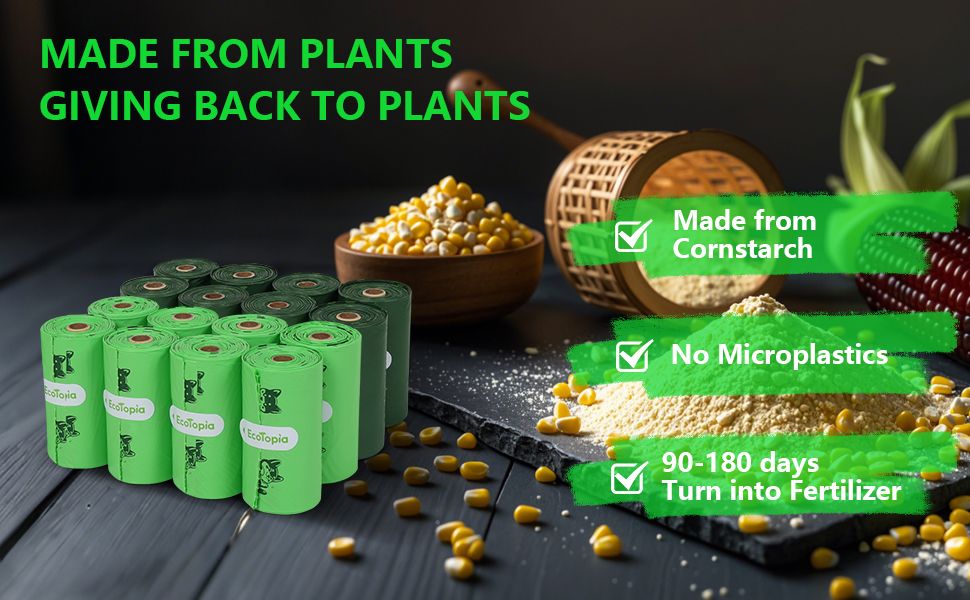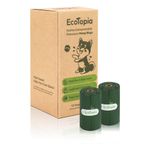The Importance of Biodegradable Polymers in Addressing Plastic Pollution: A Professional Insight
In recent years, plastic pollution has become one of the most pressing environmental issues worldwide. The detrimental effects of plastic waste on ecosystems, wildlife, and human health are undeniable. Traditional plastics, which can take centuries to decompose, contribute significantly to landfills, oceans, and waterways. However, biodegradable polymers present a promising solution to mitigate the environmental impact of plastic waste. This article provides a comprehensive, professional insight into the importance of biodegradable polymers in the fight against plastic pollution and explores their potential applications, benefits, and challenges.
What Are Biodegradable Polymers?
Biodegradable polymers are materials that break down into natural substances like water, carbon dioxide, or biomass when exposed to environmental factors such as light, heat, moisture, or microbial action. Unlike conventional plastics that are derived from fossil fuels and take hundreds of years to degrade, biodegradable polymers are typically produced from renewable resources, such as plant starch, cellulose, or even algae.
The biodegradation process is driven by microorganisms, including bacteria, fungi, and algae, which break down the polymer chains into smaller components that can be absorbed by the environment. This makes biodegradable polymers a far more environmentally friendly alternative to traditional plastics.
Why Do We Need Biodegradable Polymers?
- Reducing Plastic Pollution
Plastic waste is a pervasive environmental problem. According to the United Nations, over 8 million tons of plastic waste enter the oceans every year, causing harm to marine life and ecosystems. Traditional plastics, such as polyethylene and polypropylene, take hundreds of years to degrade, during which time they contribute to pollution, microplastics, and wildlife entanglement. Biodegradable polymers offer a solution by breaking down into non-toxic substances much more rapidly, significantly reducing the accumulation of plastic waste in the environment.
- Eliminating Microplastics
Microplastics are tiny particles of plastic that result from the breakdown of larger plastic items. These particles have been found in oceans, rivers, soils, and even in the air. They pose a serious threat to wildlife, as animals can ingest or inhale them, leading to potential harm and death. Biodegradable polymers, unlike conventional plastics, do not fragment into microplastics and completely degrade, eliminating this significant environmental concern.
- Sustainability and Renewable Resources
Traditional plastics are primarily derived from petroleum, a finite and non-renewable resource. As the global demand for plastic increases, so does the strain on natural resources. Biodegradable polymers, on the other hand, are often made from renewable resources like cornstarch, sugarcane, and algae, helping to reduce dependency on fossil fuels. By promoting the use of biodegradable materials, we can support a more sustainable, circular economy where products are produced, used, and eventually decomposed in an environmentally friendly manner.
- Promoting Circular Economy
A circular economy focuses on reducing waste, reusing materials, and recycling products in a way that minimizes environmental impact. Biodegradable polymers align with this model by allowing for products to decompose naturally and return to the environment without leaving harmful residues behind. This reduces the need for landfills, lowers carbon emissions associated with plastic production, and encourages waste-to-resource technologies like composting.
- Compliance with Regulatory Policies
Governments around the world are increasingly implementing stricter regulations on plastic waste. For example, the European Union’s Single-Use Plastics Directive aims to reduce the impact of plastic pollution by banning certain single-use plastics and encouraging the adoption of sustainable alternatives. As industries seek to comply with these regulations, biodegradable polymers offer a viable alternative that aligns with environmental goals and corporate sustainability practices.
Key Applications of Biodegradable Polymers
- Packaging
The packaging industry is one of the largest contributors to plastic waste. Biodegradable packaging materials have gained significant attention as eco-friendly alternatives to traditional plastic packaging. Materials like polylactic acid (PLA) and polyhydroxyalkanoates (PHA) are commonly used to produce biodegradable containers, bags, and films, which break down in industrial composting environments.
- Agriculture
Biodegradable polymers also have applications in agriculture. Products like biodegradable mulch films, plant pots, and seed coatings help reduce plastic pollution in agricultural settings. Traditional plastic films, commonly used for weed control and soil protection, often end up in landfills or are burned. Biodegradable alternatives, however, break down into natural compounds, reducing waste and improving soil health.
- Medical Applications
The medical field is another area where biodegradable polymers are making a significant impact. Biodegradable sutures, drug delivery systems, and medical implants are designed to safely degrade inside the body over time, eliminating the need for surgical removal and reducing the risk of infection or complications. These polymers are often made from materials like polycaprolactone (PCL) or polyglycolic acid (PGA), which have been used successfully in various medical applications.
- Consumer Goods
Many consumer goods manufacturers are turning to biodegradable polymers for items like disposable cutlery, plates, and straws. These products, which were traditionally made from petroleum-based plastics, can now be produced from biodegradable materials like PLA, reducing their environmental impact significantly. These products break down much faster than conventional plastics, offering a sustainable alternative for short-term use items.
Challenges and Limitations of Biodegradable Polymers
While biodegradable polymers present significant advantages, there are several challenges to their widespread adoption:
- Cost and Production Scalability
Currently, biodegradable polymers tend to be more expensive to produce than conventional plastics, mainly due to the costs associated with raw materials and manufacturing processes. As demand for biodegradable plastics increases, it is expected that production costs will decrease with technological advancements and economies of scale.
- Degradation Conditions
Biodegradable polymers typically require specific environmental conditions to break down properly, such as industrial composting facilities or high moisture environments. In many cases, these materials may not degrade efficiently in typical landfill conditions, where there is a lack of moisture, oxygen, and sunlight. Therefore, proper waste management infrastructure is critical for ensuring the effectiveness of biodegradable polymers in reducing plastic pollution.
- Limited Material Properties
While biodegradable polymers are suitable for certain applications, they may not yet match the performance characteristics of traditional plastics in some areas. Issues such as mechanical strength, heat resistance, and shelf life can limit their use in certain industries, particularly in packaging or construction.
Conclusion
Biodegradable polymers offer a promising solution to the global plastic pollution crisis, providing a sustainable alternative to conventional plastics that take hundreds of years to break down. As biodegradable polymers continue to evolve, they have the potential to revolutionize industries such as packaging, agriculture, medicine, and consumer goods. However, widespread adoption will require overcoming challenges related to cost, production scalability, and waste management infrastructure.
The need for biodegradable polymers is clear: they reduce plastic pollution, promote sustainability, and help create a circular economy. By embracing these innovative materials, we can take a significant step toward a cleaner, healthier planet.





